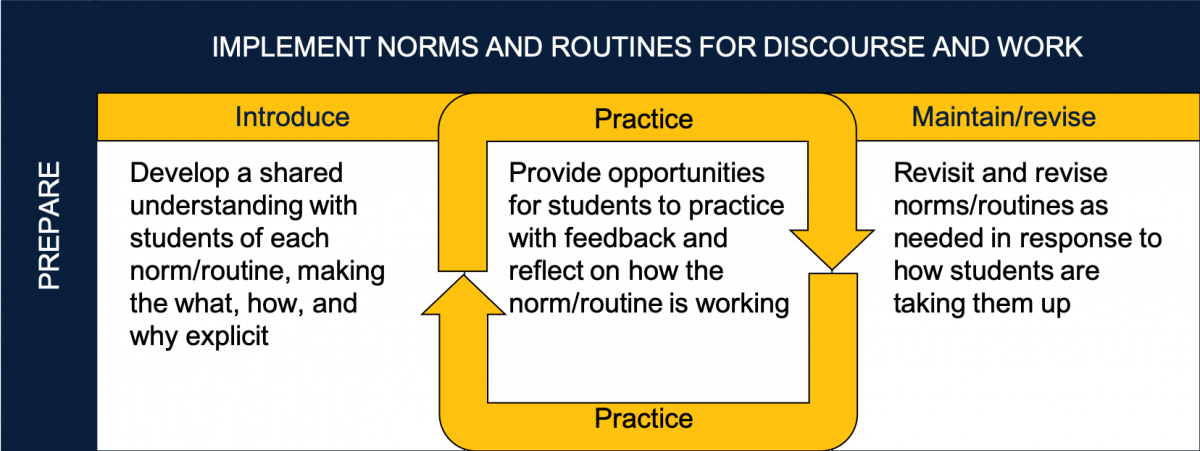What is implementing norms and routines for classroom discourse and work?
Every content area has norms and practices for how people construct and share knowledge. These norms and practices vary across subjects but often include establishing hypotheses, providing evidence for claims, and explaining one’s reasoning to others. Teaching students these norms and practices, showing why they are important, and providing opportunities to use them is crucial for building understanding and capability in a given subject. Teachers name these norms and practices as students use them, provide scaffolds, model, and then offer opportunities for students to use the norms and practices. Norms and routines for classroom discourse and work are different from organizational routines that are used to manage time, space, materials, and student participation. While these two types of norms and routines are related to one another, norms and routines specific to classroom discourse and work are focused squarely on supporting students to engage in academic work in ways that are unique to the subject matter being studied. For example, the norm of citing textual evidence is a subject-specific norm critical to discourse and work in English language arts, whereas a system for completing and using reading logs is an organizational routine often used in language arts classrooms. Additional examples of each type of norm or routine are shown below.
How does implementing norms and routines for classroom discourse and work advance justice?
Norms and routines for discourse and work are important for supporting students to engage in content area work. They make explicit for students the ways of thinking and working that are privileged by the disciplines and help position students as competent sense-makers in the content area. However, teachers must recognize when and how norms and routines for discourse and work may marginalize children. Because content area norms and routines often reflect dominant power and privilege, they can marginalize the skills and perspectives some students bring to classrooms. When choosing and implementing norms and routines for discourse and work, teachers should consider carefully which norms and routines to introduce, whom they privilege, and how to teach them.
What are the elements of the practice?
The diagram below breaks down work that teachers do when they are introducing norms and routines for classroom discourse and work. This breakdown, or decomposition, helps teacher educators to break down the practice into a set of parts that can be observed and practiced.
